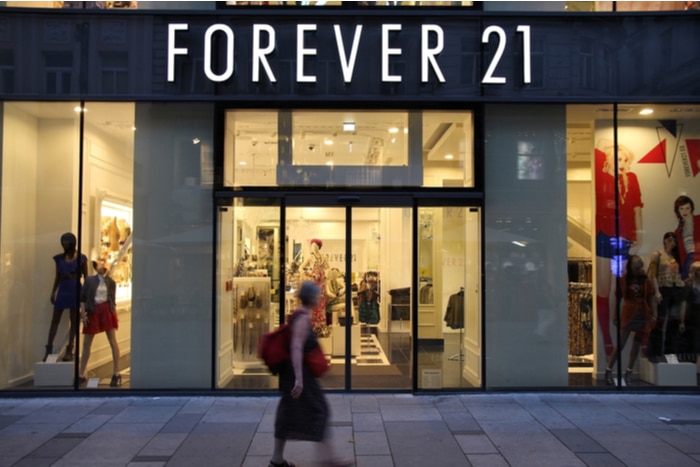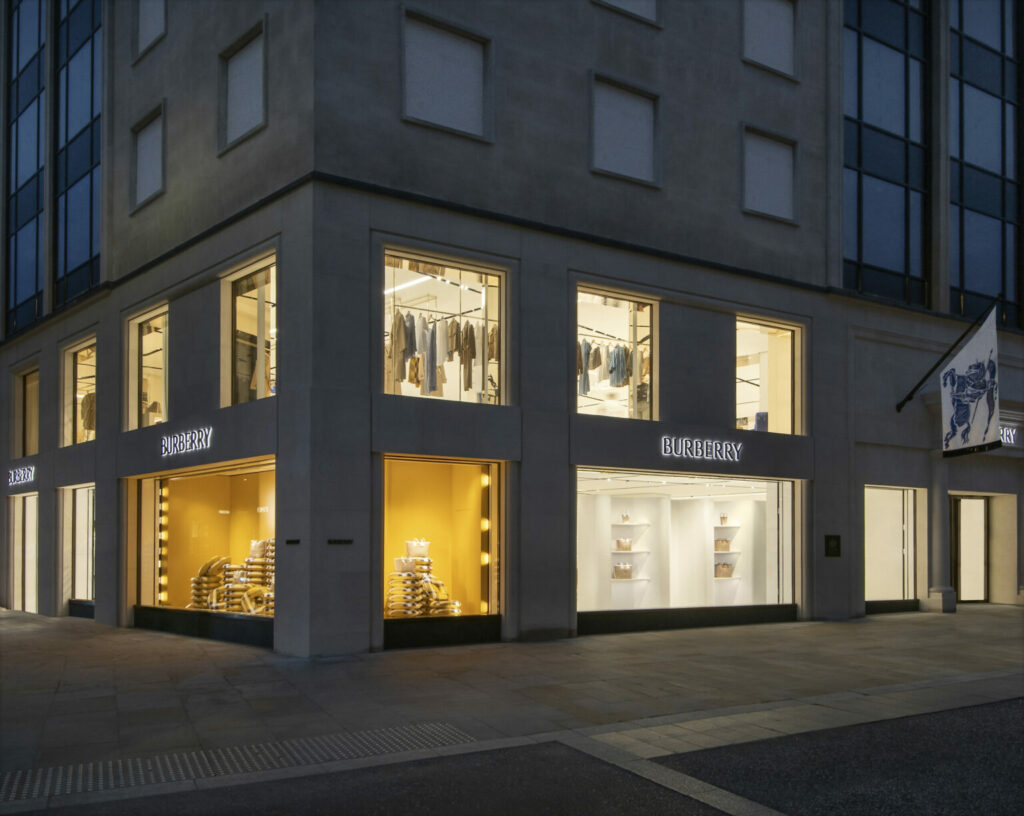A BRIEF TIMELINE
1984: South Korean husband and wife Do Won Chang and Jin Sook Chang launch Forever 21 – then known as Fashion 21 – in Los Angeles on April 16, after emigrating to the US in 1981. The 900sq ft store was located in the LA neighbourhood of Koreatown.
1985: Fashion 21’s sales totalled $700,000 (£572,000) in the first year.
1987: Now known as Forever 21, the retailer was incorporated in California in March. Chang named himself CEO of the rebranded company while his beautician wife ultimately took over merchandising.
1989: Forever 21’s first shopping centre store opens in California. The retailer has 11 units averaging 5000sq ft.
1995: The first store outside California opened in Miami’s Mall of Americas.
1997: Forever 21’s store estate reaches 40.
2001: In September, Forever 21 garment workers file a lawsuit alleging sweatshop conditions and the retailer’s failure to play legal wages. Forever 21 said the workers were employed by its Los Angeles area contractors.
Forever 21 opened its first overseas store in Canada.

2003: Abercrombie & Fitch sue Forever 21 for allegedly copying a beach motel graphic on its tank tops. The lawsuit alleged the picture was identical to those found on items at Hollister, Abercrombie’s surfing-inspired chain.
Forever 21 buys a smaller rival, Reference Clothing Company, out of bankruptcy for $3.5 million. Reference Clothing Company had grown to 36 units before collapsing in debt. Forever 21 converts 14 of those stores to the Forever 21 brand. Forever 21 had been operating 153 units before the deal.
Forever 21 also launches a website.
2004: Forever 21 ban the sale of fur in response to the concern of animal rights activists.
Tech giant Samsung file a lawsuit against eight of Forever 21’s suppliers, and the retailer itself, for allegedly infringing copyright on the Korean conglomerate’s textile patterns. The case was ultimately settled.
Forever 21 opens its largest-ever store in San Francisco – a three-storey, 27,500sq ft shop.
2005: Forever 21’s total revenues reach $1 billion (£813 million) for the first time ever.
2006: Forever 21 opens ts largest store to date – in California with a 40,000sq ft shop. It also launches a menswear collection.
2010: Forever 21’s store estate reaches 500 in the US, and it opens its first ever store in the UK in London.
2015: Forever 21 founders Do Won Chang and Jin Sook Chang are estimated to be worth $5.9 billion (£4.80 billion) combined, according to Forbes. Forever 21 also close its Intu Trafford Centre store.

2016: Forever 21 says it will review its store estate in the UK. It subsequently closes its store in Westfield Stratford and its Scottish flagship in Glasgow.
2018: Forever 21 begins downsizing and closes a number of European stores in Amsterdam, Dublin, and the UK, as well as some stores in North America.
2019: The fashion retailer operates more than 800 stores across the US, Europe, Asia and Latin America.
June 2019: Forever 21 reportedly in talks with potential lenders and public equity firm Apollo Global Management about debtor-in-possession (DIP) financing.
July 2019: Forbes report that the Changs are no longer billionaires as their fortune had slumped to $800 million (£652 million) each.
August 2019: Bloomberg report that Forever 21 want to secure a potential debtor-in-possession loan to take the company into Chapter 11 bankruptcy.
September 2019: Ariana Grande sues Forever 21 for $10 million (£8.2 million) after it used her trademark style to promote its products without her permission, including adverts featuring a “look-alike model”.
By mid-September, Forever 21 says it would continue trading from “the vast majority” of its stores in the US despite reports of it heading for administration.
On September 30, the retailer reveals plans to axe 350 stores across the world as it files for Chapter 11 bankruptcy – the Us equivalent to a CVA.

THE REASONS
Since Forever 21 launched as Fashion 21, its popularity led to it opening a new store each month.
Although the retailer’s growth seemed steady, online retailers such as Asos and Boohoo joined the market to appeal to a similar demographic.
Consequently, Forever 21 was hit by online competition.
However, competition wasn’t the only downfall in the retailer’s long list of attempts to gain and retain market share and customers.
Ian Pollard, vice president EMEA of business process management firm Signavio, argued that although digital rivals have stolen market share, “the reality is a little more complicated than just an increase in digital competitors”.
“High-street retailers are, of course, facing increasing rental costs, but they are also struggling to adapt to an increasingly digital market and tend to have a solid view of the operational processes that have the greatest impact on customer experience,” he said.
“Forever 21 might have been a fantastic retailer in the 90s, but it’s lost its way”
“Despite its 16.4 million followers on Instagram, Forever 21 failed to use their customer data to make fast, intelligent, and innovative decisions.”
Nevertheless, Forever 21’s efforts to thrive on the high street did not make it immune to lawsuits.
The red flags began in September 2001, when Forever 21 garment workers filed a lawsuit alleging sweatshop conditions and the retailer’s failure to play legal wages. Forever 21 refuted this, arguing that the workers were employed by area contractors in LA.
Over the next few years, Forever 21 faced other lawsuits from the likes of Abercrombie & Fitch and Samsung.
And in September this year, Ariana Grande sued the already cash-ridden retailer for £8 million to make its financial matters worse.
Despite its string of legal battles over the years, Kara Buffrey, client services and media manager at marketing agency Clearly, said Forever 21’s problems went beyond that.
She argued that while some retailers such as H&M and Zara have have pledged to become more environmentally sustainable, Forever 21 has focused on style rather than substance.
“It’s not enough to just be trendy anymore,” she said.
Graham Soult, a retail consultant from digital marketing firm Canny Insights, agreed.
“Forever 21 might as well have been a fantastic retailer in the 90s, but it’s lost its way,” he told Retail Gazette.
“Forever 21 entered the UK market at a point when arguably, it was already struggling”
“Other hippier brands, whether that’s online ones like Boohoo or bricks-and-mortar ones like Zara, have done things better.”
Soult added that retailers that are expanding should focus more on what they’re offering rather than unreasonably increasing rent bills.
“Forever 21 entered the UK market at a point when arguably, it was already struggling, and it should probably have kept an eye on the US rather than trying to branch out,” he said.
Karen McLellan, managing director at accountancy firm Haines Watts, argued that Forever 21’s store closures was “a reaction to its problems rather than a proactive strategy to keep itself in the game”.
Forever 21 is known for its heavy discounting despite already low prices. It could be argued that fast fashion retailers who undertake discounting at such levels end up devaluing the brand. Soult argued this may have played a role in its downfall.
He said that when customers go into Primark or Aldi, they are aware of the everyday price of what they’re purchasing, unlike Forever 21’s unstable discounting.
“If you’re doing any kind of discounting, it can come across as a sign of desperation to get rid of stuff,” he told Retail Gazette.
“Retailers are so wrapped up in trying to get the stuff out the door and to keep the cash flowing, that they lose sight of what impact it can have on the brand.”
Click here to sign up to Retail Gazette‘s free daily email newsletter

















